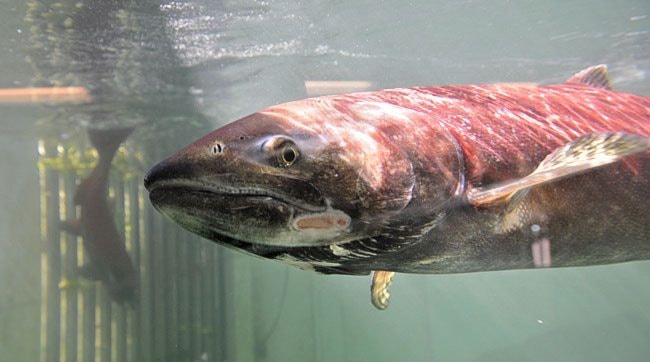This year’s chinook run turned out to be one of the worst on record, despite a pre-season projection that was only moderately bad.
Officials were expecting between 49,000 and 71,000 chinook of Canadian origin to enter the Yukon River this year. That number, minus those fish taken by subsistence fisheries along the way, should have made it past the Eagle sonar counter near the border with Canada.
But only an estimated 31,700 chinook made it that far, said Mary Ellen Jarvis, a resource manager with DFO, in an interview this week.
Last year, another disastrous run, saw 32,656 cross into Canadian waters.
By treaty between the United States and Canada, the Americans must allow 42,500 fish to pass the border, plus enough for Yukon’s First Nations to take their share.
That obligation has only been met twice in the last seven seasons.
In years where between 30,000 and 51,000 chinook are expected to make it through the border, all harvesting is shut down except for the aboriginal harvest.
Catch and release is permitted except, on occasion, in areas where allowing the activity could lead to potential conflicts with First Nations harvesters, or could cause harm to returning fish.
Angling on a section of the Teslin River, a tributary of the Yukon, has been closed this week in order to protect spawning chinook.
No fishing is permitted between the bridge at Johnson’s Crossing to the confluence with Muskrat Creek.
Anglers may return to the area Sept. 3.
“That was a short-term closure essentially to protect the fish in an active spawning area for the period of time where there would be the most activity, both on the part of salmon and anglers,” said Jarvis.
If the numbers at the border were to fall below 30,000, the aboriginal fishery could be shut down altogether, but this has never happened.
This year, as in other years where the run has been poor, First Nations have voluntarily cut back their harvest to allow more fish to make it to their spawning grounds.
Last year, the First Nations fishery took an estimated 2,000 fish, one-quarter of what is estimated to be a full First Nation fishery.
It’s hard to say what exactly is causing the decline in chinook salmon runs, she said.
“People always ask the question of, ‘What’s going on, what’s happening?’ My stock answer has to be, multiple causes in both marine and fresh water environments. Nothing leaps off the page and stands out. But certainly, Canada is continuing to collaborate with the U.S. on some Bering Sea research and other efforts through the joint technical committee of the Yukon River.”
It’s also hard to say whether the numbers will continue to drop, or if they might grow, said Jarvis.
“There are trends. Over time we’ve seen declines in chum salmon, yet we’re on a rebound on chum. That’s the good news part of things.”
This year’s chum run is strong enough to support a First Nation and a commercial fishery, said Jarvis. Close to a million chum are expected to enter the Yukon River before the run is through.
Contact Jacqueline Ronson at
jronson@yukon-news.com
